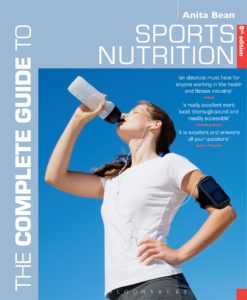How to avoid gut problems
17th February 2016
One of the most frequent questions I get asked by runners after a talk is how to prevent or cope with gastro-intestinal (GI) problems and transit troubles during training and races. It’s not an issue many like to talk about openly but it’s one that’s surprisingly common among endurance athletes.
It is estimated that 30 to 50% of endurance athletes experience GI problems related to exercise. The most debilitating and annoying of these GI issues? The sudden and overwhelming need to evacuate your bowels. In cases of extreme frequency or discomfort, this is known as runner’s diarrhoea or ‘runners’ trots’. Other common symptoms include abdominal pain and cramping, belching, bloating, nausea, heartburn, flatulence and vomiting. In a study at Maastrict University, The Netherlands, 93% of triathletes had at least one GI symptom, of which 29% were serious enough to affect performance (Jeukendrup et al, 2000).
GI problems are more common in running-type sports possibly due to the physical ‘jostling’ of the intestines during running. All the food inside your GI tract gets shaken and loosened. The reduced blood flow in the intestines and increased levels of stress hormones (due to anxiety before competitions) affect gut motility and this can further exacerbate the condition. And some people’s guts are simply more sensitive than others.
Certain foods may irritate the gut, for example high intakes of fibre, fat, protein or fructose. Dehydration or consuming a drink that is too concentrated in carbohydrate, can also add to the stress on the GI tract
Exercise – specifically more exercise than your body is used to doing – increases intestinal activity.
Solutions
- To help alleviate the problem, try doing a short run before the race or doing a warm-up loop around your house before a training run. Alternatively, having a little food before a morning run can help get things moving to enable you to empty your bowels before you head off. Experiment with training at different times of the day.
- Reduce your intake of high fibre and gas-producing foods the day before as well as the day of the race. Common culprit foods include bran cereals, cruciferous vegetables (such as cabbage, cauliflower and broccoli), beans, lentils and caffeine. For some people, energy gels and bars can cause problems as can high-fructose foods and drinks. Fructose is absorbed relatively slowly from the gut and, in high concentrations (especially in the form of a drink) can cause GI symptoms.
- Start your workout or race fully hydrated. Some athletes avoid drinking in the misguided belief that it causes GI symptoms whereas, in fact, dehydration may be the culprit.
- Make your sports drink more dilute. Some people find anything above 5g/ 100g sits in their stomach and causes discomfort.
- Train your gut by regularly consuming carbohydrate foods or drinks during training. Start with very small amounts then gradually increase the amount and frequency. It is possible to increase the number of carbohydrate transporters in your gut so that you become better able to digest and absorb carbohydrate during exercise.
- Find what works for you. It may take quite a bit of ‘trial and ‘error’ but by practising your race fuelling and hydration strategy during training there will be less risk of problems on race day.
 If you enjoyed this post and want to find out more about sports nutrition, then check out the new edition of The Complete Guide to Sports Nutrition , the definitive practical handbook for anyone wanting a performance advantage. It’s the 8th edition (the 1st edition came out in 1993!) and it has been fully updated and revised to bring together the latest research and information on sport and exercise nutrition. It covers topics such as
If you enjoyed this post and want to find out more about sports nutrition, then check out the new edition of The Complete Guide to Sports Nutrition , the definitive practical handbook for anyone wanting a performance advantage. It’s the 8th edition (the 1st edition came out in 1993!) and it has been fully updated and revised to bring together the latest research and information on sport and exercise nutrition. It covers topics such as
- Maximizing endurance, strength and performance
- Carbohydrate, protein and fat requirements
- Sports supplements
- Improving body composition
- Eating plans to cut body fat, gain muscle and prepare for competition
- Hydration and fluid intake
